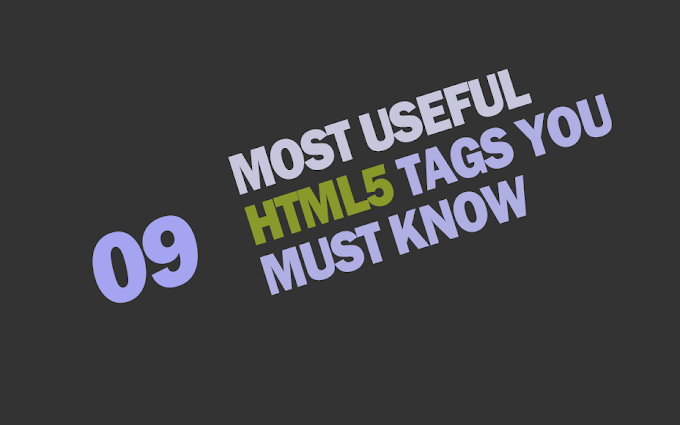Introduction
In today's rapidly evolving world of technology, programming languages play a crucial role in shaping the digital landscape. With an array of programming languages to choose from, developers often find themselves at a crossroads when deciding which language to master. This article aims to shed light on the top 10 programming languages that have garnered significant popularity and influence in the realm of software development.
1. Python
Python, often referred to as the "Swiss Army Knife" of programming languages, stands tall among the rest. Its simplicity and readability make it an ideal choice for beginners, while its versatility makes it a go-to language for seasoned developers. Python's extensive range of libraries and frameworks, such as Django and NumPy, empowers developers to tackle various tasks effortlessly.
2. JavaScript
JavaScript, often dubbed as the "language of the web," is an indispensable tool for front-end development. Its ability to bring dynamic elements to websites and interact with user interfaces has made it an essential language for modern web applications. Frameworks like React and AngularJS further boost JavaScript's popularity, enabling developers to build interactive and responsive web experiences.
3. Java
Java, a robust and object-oriented language, has maintained its relevance throughout the years. With its "write once, run anywhere" principle, Java has found its applications in a wide range of areas, from enterprise-level software to Android app development. Its rich ecosystem of libraries, such as Spring and Hibernate, simplifies development and allows for scalability.
4. C#
C#, developed by Microsoft, has gained immense popularity, particularly among Windows application developers. Known for its versatility, C# serves as the primary language in the development of Windows desktop applications, games, and framework-based software. The integration of C# with the .NET framework provides seamless interoperability and efficient memory management.
5. C++
C++, an extension of the C language, offers high performance and low-level control while ensuring compatibility with C. Widely used in the development of system software, game engines, and resource-constrained applications, C++ is a go-to choice for developers seeking efficiency and speed. Its object-oriented approach and support for generic programming make it a powerful language for complex projects.
6. Ruby
Known for its elegant syntax and readability, Ruby has gained popularity as a language for web development. Ruby on Rails, a robust web framework built with Ruby, empowers developers to create web applications swiftly and efficiently. Its focus on simplicity and productivity has attracted a strong community of developers, contributing to the growth of the Ruby ecosystem.
7. Go
Go, commonly referred to as Golang, has emerged as a language of choice for system-level programming. Developed by Google, Go offers a streamlined and efficient approach to handle concurrency, making it a perfect fit for building scalable applications. Its simplicity, along with its powerful standard library, has made it a popular choice for cloud computing and network programming.
8. Swift
Swift, introduced by Apple, has revolutionized the development of iOS applications. With its modern and concise syntax, Swift offers an enhanced development experience, ensuring safety and speed. The availability of powerful frameworks, like SwiftUI and Combine, makes Swift a versatile language for creating immersive user experiences and robust mobile applications.
9. TypeScript
TypeScript, a superset of JavaScript, brings static typing to the language, providing developers with enhanced tooling and better error detection. Its compatibility with existing JavaScript codebases and support for modern ECMAScript features have led to its widespread adoption. TypeScript's ability to catch errors during development significantly improves code quality and maintainability.
10. R
R, a language primarily used for statistical computing and data analysis, has witnessed a surge in popularity among data scientists and statisticians. Its extensive collection of packages and libraries, such as ggplot2 and dplyr, make it a powerful tool for handling and visualizing complex datasets. R's statistical capabilities, combined with its flexibility for scripting, make it an indispensable language in the data science community.
Conclusion
Navigating the vast landscape of programming languages can be a daunting task for developers. However, understanding the strengths and purposes of the top 10 programming languages can help guide the decision-making process. Whether it's Python's versatility, JavaScript's dominance in web development, or Java's broad applicability, each language brings its unique set of advantages. By harnessing the power of these languages, developers can bring their innovative ideas to life and shape the future of technology.









![[Cupons] Paid udemy courses for free](https://blogger.googleusercontent.com/img/b/R29vZ2xl/AVvXsEgYa-f_8UEE95d9stpdRzq6_DUq19avn09M2CVWIuQGI_PwaZBMcNhuHmPZQsw81GMeWwUY2Q-Cr66RoAmMq1f_pok6pdv-W86qc9_wWSxqXEq_RHYyRY0Ldly_yi2DSfyed4Cxiks6Nbzp/w680/Paid+udemy+courses+for+free.png)



0 Comments
If you have any question please ask?